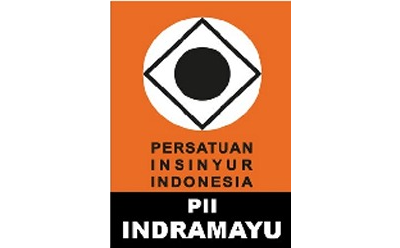PERAN STRATEGIS SCRUM MASTER PADA PENGEMBANGAN PERANGKAT LUNAK DI SEBUAH INDUSTRI
Abstract
At present, in latest industrial era, to realize the success of Integrated Product Development, many industries are competing to find innovative project design methodologies that are able to adapt to developments and consumer behavior that often changes from time to time amid the development of science and technology in dealing with competition in the 4.0 revolution era. When the industry is required to periodically produce its products and services quickly by adjusting to market movements, product development can be inspired through the Agile Project Management framework approach with the Scrum method. Not a few of the information technology (IT) industry has begun to transform to adapt the Scrum Method because of its adaptive nature for the purpose of team-based iterative software development. However, the limitations and the lack of studies in exploring the nature and characteristics of Scrum currently make many people still not too familiar with the existence and essence of a Scrum Master, especially the nature and characteristics known as a servant leader (Servant-Leader). The aim of this research is to understand the true role of a Scrum Master who is at the heart of the application of the Scrum method in software development in an industry, so that it is expected to help realize the fulfillment of excellent and optimal services that are faster and more agile.
Full Text:
PDFReferences
Arafat, Y. (2016). Fleksibilitas Sistem Informasi dari Perspektif Pengguna Dan Pengembang Sistem Informasi. Elkha, 8(1), 37–41. https://doi.org/10.26418/elkha.v8i1.18226
Carvalho, B. V. de, & Mello, C. H. P. (2011). Scrum agile product development method - literature review, analysis and classification. Product Management & Development, 9(1), 39–49. https://doi.org/10.4322/pmd.2011.005
Ependi, U. (2018). Geographic Information System Produksi Energi dan Pertambangan Kabupaten Musi Banyuasin. Jurnal Nasional Teknologi Dan Sistem Informasi, 3(3), 360–369. https://doi.org/10.25077/teknosi.v3i3.2017.360-369
Febriana, T. (2014). Studi Penerapan Inovasi Teknologi Informasi dengan Metode Technology Watch and Competitive Intelligent (Tw-Ci). ComTech: Computer, Mathematics and Engineering Applications, 5(1), 350. https://doi.org/10.21512/comtech.v5i1.2629
Flora, H. K., & Chande, S. V. (2014). A Systematic Study on Agile Software Development Methodologies and Practices. International Journal of Computer Science and Information Technologies (IJCSIT), 5(3), 3626–3637. http://www.ijcsit.com/docs/Volume 5/vol5issue03/ijcsit20140503214.pdf
Hidalgo, E. S. (2019). Adapting the scrum framework for agile project management in science: case study of a distributed research initiative. Heliyon, 5(3), e01447. https://doi.org/10.1016/j.heliyon.2019.e01447
Hutasoit, F. (2016). Apa yang dimaksud dengan Scrum pada pengembangan perangkat lunak? Https://Www.Dictio.Id, https://www.dictio.id/t/apa-yang-dimaksud-dengan-s. https://www.dictio.id/t/apa-yang-dimaksud-dengan-scrum-pada-pengembangan-perangkat-lunak/2213
Jeldi, N. P., & Chavali, V. K. M. (2013). Software Development Using Agile Methodology Using Scrum Framework. International Journal of Scientific and Research Publication, 3(4), 3–5. http://citeseerx.ist.psu.edu/viewdoc/download?doi=10.1.1.300.9408&rep=rep1&type=pdf
Kalyani, D., & Mehta, D. (2019). Study of Agile Scrum and Alikeness of Scrum Tools. International Journal of Computer Applications, 178(43), 21–28. https://doi.org/10.5120/ijca2019919318
Kannan, V., & Jhajharia, S. (2014). Agile vs waterfall: A Comparative Analysis. International Journal of Science, Engineering and Technology Research (IJSETR), 3(10), 2680–2686.
Khosravi, A., Javdani Gandomani, T., & Fahimian, H. (2017). Introduction of Scrum in An Elite Team: A Case Study. Journal of Software, 12(4), 173–179. https://doi.org/10.17706/jsw.12.3.173-179
Kustanto, P., R. Wisnu P. Pamungkas, & Fathurrozi, A. (2021). Pembangunan Aplikasi E-Magang Perguruan Tinggi dengan Memanfaatkan SDLC SCRUM pada Agile Project Management. Journal of Informatic and Information Security, 2(1), 99–112. https://doi.org/10.31599/jiforty.v2i1.659
Logan, B. M. (1986). New Product Development. Polymeric Materials Science and Engineering, Proceedings of the ACS Division of Polymeric Material, 54, 199.
Mahalakshmi, M., & Sundararajan, M. (2013). Traditional SDLC Vs Scrum Methodology – A Comparative Study. International Journal of Emerging Technology and Advanced Engineering, 3(6), 2–6.
Schwaber, K., & Sutherland, J. (2017). The Scrum Guide: The Definitive The Rules of the Game. Scrum.Org and ScrumInc, November, 19. http://www.scrumguides.org/docs/scrumguide/v1/Scrum-Guide-US.pdf
Sharma, S., & Hasteer, N. (2017). A comprehensive study on state of Scrum development. Proceeding - IEEE International Conference on Computing, Communication and Automation, ICCCA 2016, 867–872. https://doi.org/10.1109/CCAA.2016.7813837
DOI: https://doi.org/10.31884/jtt.v9i2.474
Refbacks
- There are currently no refbacks.
Copyright (c) 2023 JTT (Jurnal Teknologi Terapan)

This work is licensed under a Creative Commons Attribution-NonCommercial-NoDerivatives 4.0 International License.
 Creative Common Attribution-ShareAlike 4.0 International (CC BY-SA 4.0)
Creative Common Attribution-ShareAlike 4.0 International (CC BY-SA 4.0)














